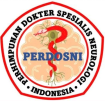The Role of Dual Antiplatelet in Stent-Assisted Coiling in Wide-Neck Aneurysm
Downloads
Highlight:
- Dual antiplatelet is the gold standard for endovascular treatment of wide-neck aneurysms.
- The role of dual antiplatelet is to prevent stent thrombosis after treatment.
- The thrombosis rate reported during stent-assisted coiling is quite high.
ABSTRACT
Stent-assisted coiling (SAC) in wide-neck aneurysm treatment is associated with antiplatelet use. Dual antiplatelet therapy (DAPT) has been the gold standard for protecting against thrombosis events and is widely accepted for endovascular embolization treatment with a stent-assisted or flow diverter. Some patients experience vascular events due to the reduced efficacy of antiplatelet agents despite taking DAPT. The reported thrombosis rates during stent-assisted coiling embolization range from 2% to 20%. Thromboembolic complications, such as in-stent thrombosis, can manifest in 4.6% of cases. The correlation between platelet reactivity during treatment and bleeding events remains unclear. However, the association between High Residual Platelet Reactivity (HRPR) or hyporesponsiveness and ischemic events is well established. Based on various laboratory definitions, hyperresponsiveness in patients with clopidogrel occurs in about 14–30% of patients due to major and minor bleeding. Therefore, the optimization of antiplatelet therapy has developed significantly in the neurointerventional community.
Bechan RS, Sprengers ME, Majoie CB, Peluso JP, Sluzewski M, van Rooij WJ. Stent-assisted coil embolization of intracranial aneurysms: Complications in acutely ruptured versus unruptured aneurysms. Am J Neuroradiol. 2016;37(3):502–7.
Maldonado IL, Bonafé A. Stent-assisted techniques for intracranial aneurysms. In: Murai Y, editor. Aneurysm. InTech; 2012. p. 291–312.
Kim KS, Fraser JF, Grupke S, Cook AM. Management of antiplatelet therapy in patients undergoing neuroendovascular procedures. J Neurosurg. 2018;129(4):890–905.
Dong J, Wang F, Sundararajan S. Use of dual antiplatelet therapy following ischemic stroke. Stroke. 2020 ;51(5):e78–80.
Alhazzani A, Venkatachalapathy P, Padhilahouse S, Sellappan M, Munisamy M, Sekaran M, et al. Biomarkers for antiplatelet therapies in acute ischemic stroke: A clinical review. Front Neurol. 2021;12.
Jiang X-L, Samant S, Lesko LJ, Schmidt S. Clinical pharmacokinetics and pharmacodynamics of clopidogrel. Clin Pharmacokinet. 2015;54(2):147–66.
Cuisset T, Grosdidier C, Loundou AD, Quilici J, Loosveld M, Camoin L, et al. Clinical implications of very low on-treatment platelet reactivity in patients treated with thienopyridine: The POBA study (predictor of bleedings with antiplatelet drugs). JACC Cardiovasc Interv. 2013;6(8):854–63.
Oliphant CS, Trevarrow BJ, Dobesh PP. Clopidogrel response variability: Review of the literature and practical considerations. J Pharm Pract. 2016 ;29(1):26–34.
Loer HLH, Türk D, Gómez-Mantilla JD, Selzer D, Lehr T. Physiologically Based Pharmacokinetic (PBPK) modeling of clopidogrel and its four relevant metabolites for CYP2B6, CYP2C8, CYP2C19, and CYP3A4 drug–drug–gene interaction predictions. Pharmaceutics. 2022;14(5):915.
Ray S. Clopidogrel resistance: The way forward. Indian Heart J. 2014;66(5):530–4.
Almandoz JED, Crandall BM, Scholz JM, Fease JL, Anderson RE, Kadkhodayan Y, et al. Pre-procedure P2Y12 reaction units value predicts perioperative thromboembolic and hemorrhagic complications in patients with cerebral aneurysms treated with the Pipeline Embolization Device. J Neurointerv Surg. 2013;5(Suppl 3):iii3–10.
Norgard NB, DiNicolantonio JJ. Clopidogrel, prasugrel, or ticagrelor? A practical guide to use of antiplatelet agents in patients with acute coronary syndromes. Postgrad Med. 2013;125(4):91–102.
Sharma P, Sachdeva MUS, Kumar N, Bose S, Bose P, Uppal V, et al. A comparative study between light transmission aggregometry and flow cytometric platelet aggregation test for the identification of platelet function defects in patients with bleeding. BLOOD Res. 2021;56(2):109–18.
Lenk E, Spannagl M. Platelet function testing-guided antiplatelet therapy. EJIFCC. 2014;24(3):90–6.
Bhopalwala AM, Hong RA, Khan ZR, Valentin MR, Badawi RA. Routine screening for CYP2C19 plymorphisms for patients being treated with clopidogrel is not recommended. Hawaii J Med Public Heal. 2015;74(1):16–20.
Ding P, Wei Y, Chen N, Liu H. Validation of a new ELISA-based vasodilator-associated stimulated phosphoprotein phosphorylation assay to assess platelet reactivity index in a chinese population. SAGE Journals. 2018;24(3):452–61.
Bonello L, Mancini J, Pansieri M, Maillard L, Rossi P, Collet F, et al. Relationship between post-treatment platelet reactivity and ischemic and bleeding events at 1-year follow-up in patients receiving prasugrel. J Thromb Haemost. 2012;10(10):1999–2005.
Jeong Y-H, Bliden KP, Antonino MJ, Park K-S, Tantry US, Gurbel PA. Usefulness of the VerifyNow P2Y12 assay to evaluate the antiplatelet effects of ticagrelor and clopidogrel therapies. Am Heart J. 2012;164(1):35–42.
Almandoz JED, Crandall BM, Scholaz JM, Fease JL, Anderson RE, Kadkhodayan Y, et al. Last-recorded P2Y12 reaction units value is strongly associated with thromboembolic and hemorrhagic complications occurring up to 6 months after treatment in patients with cerebral aneurysms treated with the pipeline embolization device. Am J Neuroradiol. 2014;35(1):128–35.
Copyright (c) 2023 Ricky Gusanto Kurniawan, Bambang Tri Prasetyo, Beny Rilianto, Abrar Arham

This work is licensed under a Creative Commons Attribution-ShareAlike 4.0 International License.





















